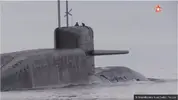Nojatuolistrategi
Ylipäällikkö
Cold War is Boring.
https://www.verkkouutiset.fi/tama-oli-a-11a-ruotsin-unohdettu-ydinsukellusvene/
Tämä oli A-11A: Ruotsin unohdettu ydinsukellusvene
Länsinaapurissamme suunniteltiin ydinsukellusveneitä 1950- ja 1960-luvuilla.
Harva tietää, että Ruotsissa puuhattiin kylmän sodan alussa vakavissaan omaa ydinsukellusvenettä. Vuonna 1957 aloitettu hanke ei ikinä edennyt suunnitteluastetta pidemmälle. Asiasta tässä kertovan War is Boringin mukaan tämä saattoi olla niin ympäristön kuin ruotsalaisten sukellusvenemiestenkin parhaaksi. Aluksen reaktorin säteilysuojaus olisi nimittäin ollut täysin riittämätön.
A-11A-nimellä tunnettu ydinsukellusvene olisi ollut etenkin sen voimanlähde huomioiden varsin pieni. Aluksen rungosta suunniteltiin alle 50 metrin mittaista. Veneeseen kehiteltiin mielenkiintoisia ja aikanaan edistyksellisiä yksityiskohtia. Varsinaisen torpedohuoneen tilalla oli pitkälti automatisoitu revolveria muistuttava laukaisulaite. A-11A olisi ollut myös eräs ensimmäisiä yhdellä suurella potkurilla varustettuja sukellusveneitä, jonka ohjaussiivekkeet ovat kokonaan liikuteltavat. Ruotsalaisista arkistoista löydettyä suunnittelumateriaalia voi katsella tämän linkin takaa sukellusveneasiantuntija H.I Suttonin sivuilta.
Ruotsalaisen ydinsukellusveneen voimanlähteeksi kehitettiin reaktoria Projekti Neptunina tunnetussa hankkeessa. Reaktoria oli määrä käyttää pääasiassa pinta-aluksissa. Reaktorien sivutuotteena syntynyttä plutoniumia olisi voitu käyttää Ruotsin samoihin aikoihin kehittämissä ydinaseissa.
A-11A peruttiin lopulta vuonna 1962.
https://www.verkkouutiset.fi/tama-oli-a-11a-ruotsin-unohdettu-ydinsukellusvene/




